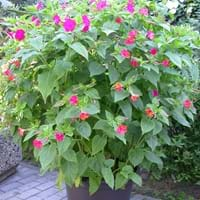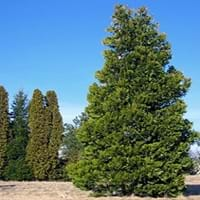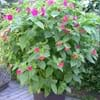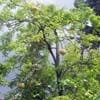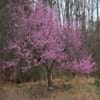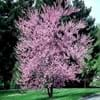Life Span
Perennial
Annual and Perennial
Type
Flowering Plants, Grass, Shrubs
Tree
Origin
Central America, North America
Western United States, California, Mexico
Types
Not Available
Not Available
Habitat
Temperate Regions, tropical environments
low mountains, Mountain tops, Subtropical climates, Temperate Regions
USDA Hardiness Zone
7-10
5-8
AHS Heat Zone
Not Available
8-1
Sunset Zone
Not Available
1a, 1b, 2a, 2b, 3a, 3b, 4, 5, 6, 7, 8, 9, 10, 11, 12, 14, 15, 16, 17, 18, 19, 20, 21, 22, 23, 24
Habit
Upright/Erect
Upright/Erect
Flower Color
Pink, Red, White, Yellow
Non Flowering Plant
Flower Color Modifier
Bicolor
Bicolor
Fruit Color
Black, Green
Sandy Brown
Leaf Color in Spring
Green, Dark Green
Green
Leaf Color in Summer
Dark Green
Green
Leaf Color in Fall
Yellow green
Green
Leaf Color in Winter
Dark Green
Green
Leaf Shape
Egg-shaped
Pinnate
Plant Season
Fall, Late Summer, Mid Summer
Spring, Summer, Fall, Winter
Sunlight
Full Sun
Full Sun, Partial Sun
Type of Soil
Loam, Sand
Loam, Sand
The pH of Soil
Neutral, Slightly Acidic, Slightly Alkaline
Acidic, Neutral
Soil Drainage
Well drained
Well drained
Bloom Time
Early Fall, Late Summer, Mid Summer
Not Available
Tolerances
Drought
Drought
Where to Plant?
Container, Ground, Pot
Ground
How to Plant?
Seedlings
Stem Planting
Plant Maintenance
Low
Medium
Watering Requirements
Do not water excessively
Needs less watering, Water occasionally
In Summer
Lots of watering
Lots of watering
In Spring
Moderate
Moderate
In Winter
Average Water
Average Water
Soil pH
Neutral, Slightly Acidic, Slightly Alkaline
Acidic, Neutral
Soil Type
Loam, Sand
Loam, Sand
Soil Drainage Capacity
Well drained
Well drained
Sun Exposure
Full Sun
Full Sun, Partial Sun
Pruning
Cut back old stems to the ground
Prune if you want to improve plant shape, Remove damaged leaves, Remove dead branches, Remove dead leaves
Fertilizers
as it is a flowering plant, use high phosphorous content fertilizer
No fertilizers needed
Pests and Diseases
Aphids, Slugs
Insects
Plant Tolerance
Drought
Drought
Flower Petal Number
Single
Not Available
Fragrant Bark/Stem
No
Yes
Foliage Texture
Coarse
Medium
Foliage Sheen
Matte
Matte
Attracts
Bees, Butterflies
Birds
Allergy
Not Available
no allergic reactions
Aesthetic Uses
Showy Purposes, small hedge
Showy Purposes
Beauty Benefits
Making cosmetics
Not Available
Environmental Uses
Not Available
Air purification
Medicinal Uses
anti-inflammatory, Aphrodisiac, Diuretic, Purgative, Vulnerary
Stomach pain
Part of Plant Used
Flowers, Leaves
Bark, Leaves
Other Uses
Edible dye
Making Perfumes, Used in pencil industry
Used As Indoor Plant
No
No
Used As Outdoor Plant
Yes
Yes
Garden Design
Container, Edging, Feature Plant, Foundation, Wildflower
Screening / Wind Break, Shade Trees, Street Trees
Botanical Name
Mirabilis jalapa
CALOCEDRUS decurrens
Common Name
marvel of peru, four o'clock flower
Incense Cedar
In Hindi
Mirabilis jalapa
Incense Cedar
In German
Wunderblume
Zeder
In French
Belle-de-nuit
Encens Cedar
In Spanish
Dondiego de noche
cedro de incienso
In Greek
mirabilis Jalapa
θυμίαμα Κέδρος
In Portuguese
Maravilha
cedro de incenso
In Polish
mirabilis Jalapa
kadzidło Cedar
In Latin
mirabilis Ja-
incensum Cedar
Phylum
Magnoliophyta
Tracheophyta
Class
Magnoliopsida
Pinopsida
Order
Caryophyllales
Pinales
Family
Nyctaginaceae
Cupressaceae
Genus
Mirabilis
Calocedrus
Clade
Angiosperms, Core eudicots, Eudicots
Not Available
Tribe
Not Available
Not Available
Subfamily
Not Available
Not Available
Number of Species
Not Available
Not Available
Season and Care of Mirabilis Jalapa and Incense Cedar
Season and care of Mirabilis Jalapa and Incense Cedar is important to know. While considering everything about Mirabilis Jalapa and Incense Cedar Care, growing season is an essential factor. Mirabilis Jalapa season is Fall, Late Summer and Mid Summer and Incense Cedar season is Fall, Late Summer and Mid Summer. The type of soil for Mirabilis Jalapa is Loam, Sand and for Incense Cedar is Loam, Sand while the PH of soil for Mirabilis Jalapa is Neutral, Slightly Acidic, Slightly Alkaline and for Incense Cedar is Acidic, Neutral.
Mirabilis Jalapa and Incense Cedar Physical Information
Mirabilis Jalapa and Incense Cedar physical information is very important for comparison. Mirabilis Jalapa height is 60.00 cm and width 50.00 cm whereas Incense Cedar height is 2,130.00 cm and width 180.00 cm. The color specification of Mirabilis Jalapa and Incense Cedar are as follows:
Mirabilis Jalapa flower color: Pink, Red, White and Yellow
Mirabilis Jalapa leaf color: Green, Dark Green
Incense Cedar flower color: Non Flowering Plant
- Incense Cedar leaf color: Green
Care of Mirabilis Jalapa and Incense Cedar
Care of Mirabilis Jalapa and Incense Cedar include pruning, fertilizers, watering etc. Mirabilis Jalapa pruning is done Cut back old stems to the ground and Incense Cedar pruning is done Prune if you want to improve plant shape, Remove damaged leaves, Remove dead branches and Remove dead leaves. In summer Mirabilis Jalapa needs Lots of watering and in winter, it needs Average Water. Whereas, in summer Incense Cedar needs Lots of watering and in winter, it needs Average Water.
